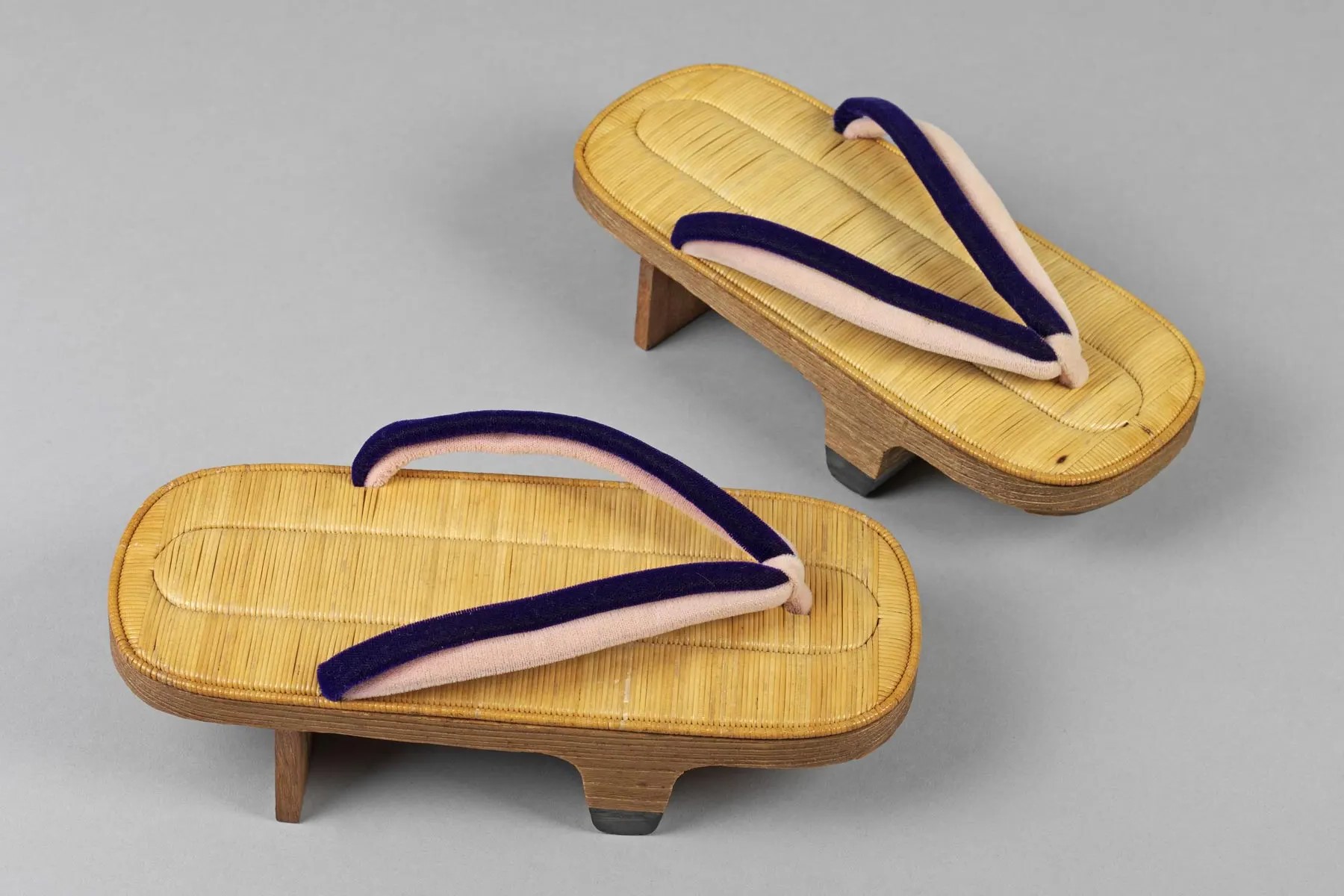Intriguing Varieties Of Traditional Japanese Footwear

Have you ever wondered about the different types of traditional Japanese footwear? Japan boasts a rich history of unique shoes that have evolved over centuries. From the iconic geta to the elegant zori, each type of footwear tells a story about Japanese culture and lifestyle. These shoes aren't just about fashion; they serve practical purposes too. For instance, geta are perfect for rainy days, keeping your feet dry and elevated above puddles. Zori, on the other hand, are often worn with formal attire like kimonos. Let's take a closer look at these fascinating pieces of Japanese heritage.
Geta: The Wooden Wonders
Geta are traditional Japanese sandals made from wood. They elevate the wearer above the ground, keeping feet dry during rainy seasons. These sandals have a unique design that makes them both functional and stylish.
Classic Geta: These have a flat wooden base with two supporting teeth called "ha." They are often worn with yukata during festivals.
Tengu Geta: Named after the mythical Tengu, these have a single, tall tooth in the center. They require balance and skill to walk in.
Okobo: Also known as "pokkuri geta," these are worn by maiko (apprentice geisha). They have a thick wooden base and make a distinctive clacking sound.
Zori: The Everyday Elegance
Zori are traditional Japanese sandals that resemble flip-flops. They are usually made from rice straw, cloth, or leather. Zori are often paired with formal attire like kimono.
Tatami Zori: Made from woven straw, these are comfortable and breathable. They are perfect for casual wear.
Vinyl Zori: These are more modern and often worn with yukata. They are easy to clean and come in various colors.
Leather Zori: These are more formal and often worn by men. They have a sleek design and are usually black or brown.
Waraji: The Straw Sandals
Waraji are traditional Japanese sandals made from straw. They were commonly worn by samurai and farmers. These sandals are lightweight and durable.
Traditional Waraji: Made from rice straw, these are tied around the feet with strings. They are perfect for long walks.
Modern Waraji: These are made from synthetic materials but retain the traditional design. They are often used in festivals and ceremonies.
Tabi: The Split-Toe Socks
Tabi are traditional Japanese socks with a split between the big toe and other toes. They are worn with zori and geta. Tabi provide comfort and flexibility.
White Tabi: These are the most common and are often worn with formal attire. They symbolize purity and cleanliness.
Colored Tabi: These come in various colors and patterns. They are often worn during festivals and special occasions.
Outdoor Tabi: Also known as "jika-tabi," these have rubber soles and are worn by construction workers and farmers. They provide excellent grip and flexibility.
Okobo: The Maiko's Choice
Okobo are high wooden sandals worn by maiko. They have a thick base and are often lacquered. These sandals are both functional and symbolic.
Red Okobo: Worn by young maiko, these have a red strap and symbolize youth and vibrancy.
Black Okobo: Worn by senior maiko, these have a black strap and symbolize maturity and experience.
Jikatabi: The Ninja's Footwear
Jikatabi are split-toe boots with rubber soles. They are often worn by construction workers, farmers, and even ninjas. These boots provide excellent grip and flexibility.
Traditional Jikatabi: Made from durable cotton, these are perfect for outdoor activities. They have a snug fit and provide excellent support.
Modern Jikatabi: These are made from synthetic materials and come in various colors. They are often used in festivals and martial arts.
Setta: The Samurai's Sandals
Setta are traditional Japanese sandals made from leather or straw. They were commonly worn by samurai. These sandals are both durable and stylish.
Leather Setta: These are more formal and often worn by men. They have a sleek design and are usually black or brown.
Straw Setta: Made from woven straw, these are comfortable and breathable. They are perfect for casual wear.
Uwabaki: The Indoor Slippers
Uwabaki are indoor slippers commonly worn in Japanese schools and homes. They are lightweight and easy to slip on and off.
School Uwabaki: These are often white with a colored band. They are worn by students in schools.
Home Uwabaki: These come in various colors and designs. They are perfect for keeping feet clean indoors.
Ashida: The Elevated Sandals
Ashida are traditional Japanese sandals with a high wooden base. They are similar to geta but have a more elevated design. These sandals are both functional and stylish.
Traditional Ashida: Made from wood, these have a high base and are often worn during rainy seasons. They keep feet dry and clean.
Modern Ashida: These are made from synthetic materials and come in various colors. They are often used in festivals and ceremonies.
Embracing Japanese Footwear Traditions
Traditional Japanese footwear offers a unique glimpse into the country's rich cultural heritage. From the practical Geta to the elegant Zori, each type of footwear has its own story and purpose. Tabi socks add another layer of tradition, blending comfort with cultural significance. These shoes are not just about function; they reflect Japan's history, climate, and social customs. Wearing them can be a fun way to connect with Japanese culture, whether you're visiting Japan or exploring its traditions from afar. Next time you see a pair of Geta or Zori, you'll know there's more to them than meets the eye. Embrace these traditional shoes and step into a piece of Japan's past.

